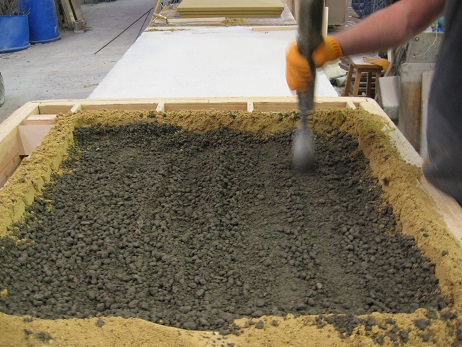How cast stone is made
Cast Stone is manufactured from a combination of natural aggregates, a cementicious binder and colouring where appropriate. It is produced from specially designed moulds which may be made from wood, rubber or glass-fibre.
There are three main techniques used in the manufacture of cast stone.
| Semi Dry (one part) | Semi Dry (two part) | Wet Cast (one part) |
|---|---|---|
|
The stones are made from an Many stones per mould per day can be produced. Most 'finishing' of the stone takes place immediately it is turned out of the mould and is still 'wet.' |
The stones are made by combining two mix types. A 'facing' mix and a 'backing' mix. Both mixes have a low water content. Many stones per mould per day can be produced. Most 'finishing' of the stone takes place immediately it is turned out of the mould and is still 'wet.' |
The stones are made using a single mix type and a much higher water content than the semi-dry methods. Only one stone per mould per day can be produced. 'Finishing' the stone can only take place after it has cured. |
See the attached pdf document for more detail.
